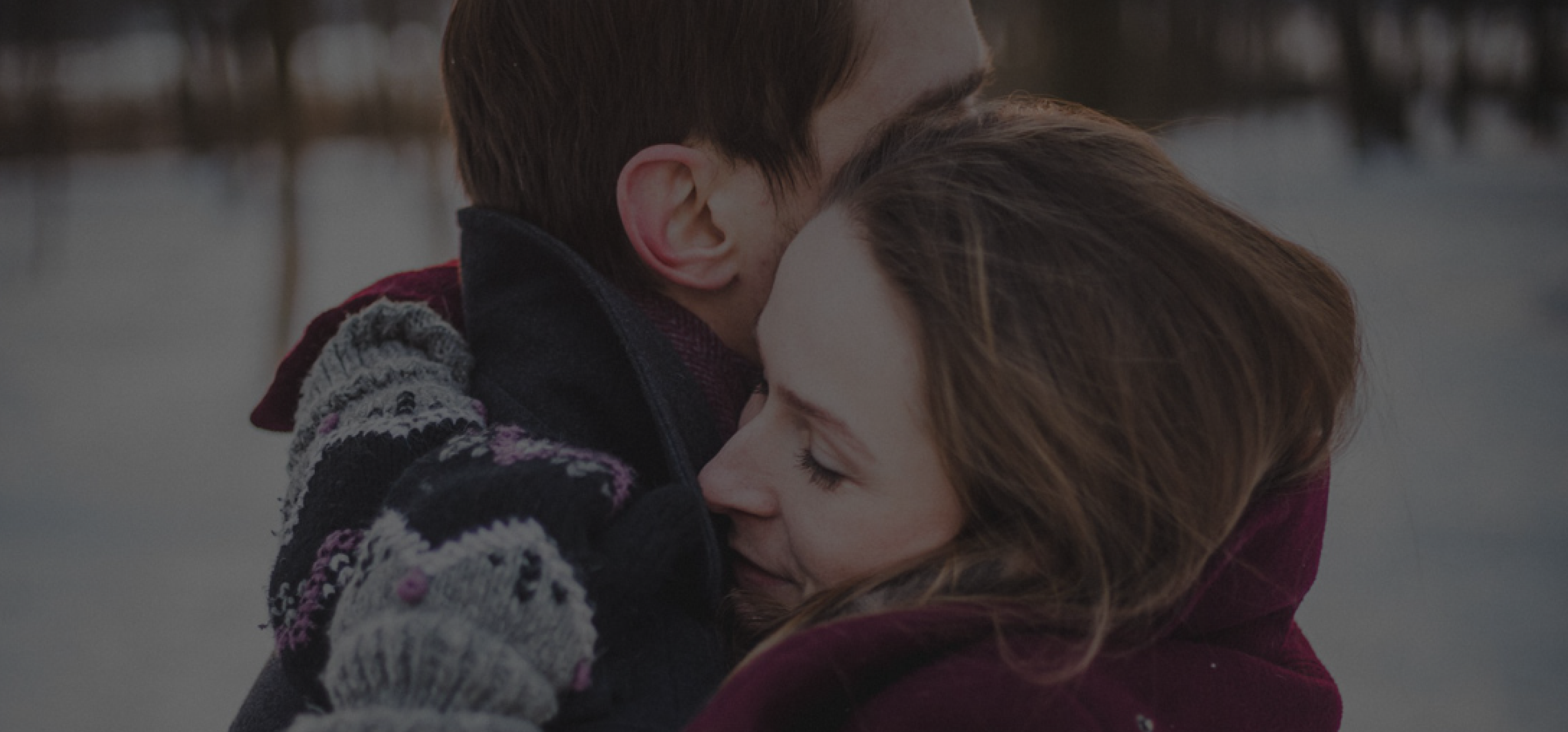Reviewed by Emmeline Massey MSW, LSW
If you find yourself in an unhealthy relationship that you can’t seem to leave, chances are you’re experiencing a phenomenon known as trauma bonding. A trauma bond is a psychological response that happens when an abused person develops an unhealthy attachment to their abuser. Trauma bonds can occur in any situation where one person is exploiting another and are not limited to romantic relationships.¹
Trauma bonds aren’t simply a challenging relationship: they are deeply rooted in our basic need for attachment and security. The abuser wields tremendous power and control that compound with shame and embarrassment, making it impossible for their abused partner to leave.
If you’re stuck in a trauma bond, or you are struggling to move on after ending a trauma bond relationship, there are steps you can take to break free and find healing. You can unlearn the coping mechanisms you’ve developed to survive, learn new techniques, heal from the trauma, and break the bonds that hold you.
What Is a Trauma Bond?
A trauma bond is an unhealthy connection between an abuser and the abused person. Trauma bonds can happen in a family system, workplace, and even in religious groups, but we most commonly associate trauma bonds with toxic romantic relationships. The connection that develops in a trauma bond results from a psychological response to abuse where, over time, the person being abused begins to develop sympathy or even affection for their abuser.
Trauma bonds are thought to be the result of unhealthy attachments. As humans, we are hard-wired to form attachments to people that we see as defenders, protectors, or caregivers to survive. Children form attachments to their parents or caregivers, and as adults, we develop attachments to people we see as sources of support, comfort, and security. The emotional need to stay can be intense when the abuser is also the comforter or caregiver (as in a romantic partner). It becomes hard to separate love from a trauma bond.
The Science Behind Trauma Bonds
Trauma bonding is more than just an emotional attachment; biological mechanisms at work make these attachments even stronger. When we begin to bond with someone, our brain releases a neurotransmitter called oxytocin, sometimes called the “love hormone”.² It is the same hormone released during the birthing process, sexual intimacy, and when you fall in love. Multiple brain imaging studies have found that the adult brain undergoes specific changes related to attachments and separations.³
Early experiences also shape the way that we connect or attach with others. If we develop unhealthy attachment styles when we are young, these patterns can repeat over and over in other relationships creating a process of revictimization and relationship dysfunction.
The Difference Between Trauma Bonding and Codependency
Trauma bonding and codependency are similar but differ in the focus of the behavior. However, both can exist in the same relationship.
Trauma bonding is rooted in a desperate need for the relationship to continue. In some ways, it is akin to an addiction to the relationship with the abuser. This focus can become so intense that you cannot recognize that the relationship is unhealthy despite the abuse or betrayal.
Codependency is focused more on the addiction to caring for the other person and placing their needs above your own. In a codependent relationship, an individual can’t be happy unless they support their partner at all costs, including their own safety and well-being. This behavior often enables the other partner to continue abusive or destructive behaviors with the codependent person.
Love Versus Trauma Bonding
Sometimes, it can be hard to tell the difference between true love and trauma bonding, especially if you experienced early trauma and unhealthy attachments. In short, trauma bonded relationships are based on power and control. Loving relationships are based on mutual respect and do not include abuse, violence, or intimidation.
Healthy loving relationships involve:⁴
- Physical and emotional safety
- Mutual respect
- Trust
- Honesty
- Accountability and responsibility for one’s actions
- Healthy boundaries
- Communicative and willing to work through problems together
Unhealthy, trauma bonded relationships may involve:⁴
- Intimidation
- Emotional abuse, possible physical abuse
- Isolation from friends and family
- Denial, Minimization, and Blaming
- Control over decisions and/or finances
- Threats and Coercion
- Poor boundaries
- Mistrust
How to Heal from a Trauma Bond
Anyone in an abusive relationship can develop a trauma bond with their abuser. If you’ve experienced childhood trauma, you may be more susceptible to these types of attachments. Your coping strategies developed over time, and they kept you safe at some point. It will take time to unlearn those strategies that no longer serve you and begin to learn new techniques and tools. What’s important to know is that you can heal from your trauma and learn better coping methods. It takes time, and it takes specialized help.
It’s hard to look at your own trauma objectively and see your coping patterns realistically. It isn’t that you don’t know something isn’t working. On the contrary, you know it well and feel it intensely. What you can’t do alone is separate the emotion from the behavior. In short, you’re too emotionally close to it. That’s where the help comes in.
Healing from trauma is not a simple task to check off on a to-do list. Rather, healing from trauma is a process that happens over time and with patience and great care. You have to unravel your past and where it all started. This type of healing takes specialized, trauma-informed care from a therapist who understands the complexities of trauma responses. A therapist can help you work through your experience and address your emotional attachment with your abuser without shame or judgment.
There is no single “therapy” for treating trauma bonds. Rather, there are a variety of trauma-focused therapies that effectively help survivors of trauma, and these therapies can be used to heal trauma bonds. A clinician can help you move forward using a combination of the therapeutic approaches below.
Cognitive Behavioral Therapy
Cognitive Behavioral Therapy (CBT) focuses on exploring how thoughts and feelings influence behaviors and finding ways to change negative thought patterns. This process helps change behavioral responses and develop more effective ways of dealing with challenges. Trauma-focused CBT (tf-CBT) is a specialized, evidence-based form of CBT that specifically addresses the impact of traumatic events.
Dialectical Behavioral Therapy
Dialectical Behavioral Therapy (DBT) is widely used to treat trauma. It is similar to CBT, however, DBT takes the process a step further and empowers people to change their behavior patterns. DBT strategies like mindfulness, communication, distress tolerance, and emotional regulation can help you learn better ways of managing your emotional responses to stressful situations so that you can make decisions that are healthy for you.
Trauma Bond Interventions
Outside of getting professional support, here are some steps you can take on your own to break free from a trauma bonded relationship:
Educate Yourself
Learn how to identify the signs of unhealthy or abusive relationships. Learn what a healthy relationship looks like so that you can distinguish between the two.
Focus on the Here and Now
Staying focused in the present allows you to see the relationship and the abusive person as they are now. Hoping things will be different or reminiscing about the “good times” minimizes the present dangers and makes it tempting to stay in the relationship.
Create Some Space
Sometimes you can be so close to a situation that you cannot see it clearly. Take a step back and get some distance from the abusive person so that you can see the relationship for what it is. Space gives you clarity.
Find Support
Consider joining a support group. A support group gives you a place to openly talk about your experience and listen to the experience of others. Hearing from others who have gone through a similar situation can help you realize that you are not alone in your experience.
Practice Good Self-Care
Self-care involves activities that reduce stress and promote physical and emotional well-being. These activities are nurturing, fulfilling, and healthy. Good self-care helps relieve stress and helps you build self-love and learn to rely on yourself for comfort rather than turning to an abusive partner. Some examples of self-care can include:
- Exercise
- Journaling
- Engaging in a hobby or activity you enjoy
- Listening to music
- Relaxation practices like yoga, meditation, or Tai Chi
- Getting good, restorative sleep
- Eating well
- Spending time with trusted friends and family
Make Future Plans
Think of how you want your future to look. Allow yourself to envision more for yourself and make plans to realize that future.
Develop Healthy Relationships
Allow yourself to connect with people who are emotionally and physically safe. Practice healthy communication and advocating for yourself. Experiencing healthy relationships helps to strengthen your ability to form healthy attachments.
Give Yourself Permission to Heal
You are deserving of health and happiness. To want these things is not selfish. Healing starts with giving yourself permission to do what you need to do to engage in the healing process. You are allowed to grow and move on from environments and relationships that do not serve you.
Be Kind to Yourself
Being in an abusive relationship can be devastating to your self-esteem and emotional well-being. Be mindful of the things you say to yourself. Remind yourself often that you have many positive qualities and that you are deserving of happiness. Be gentle with yourself when you stumble. You’re learning a new way of living, and it takes time.
Professional Support for Healing from Trauma Bonds
When dealing with trauma bonding issues, you don’t have to walk alone. There is help, and there is hope for a more fulfilling, joy-filled life without fear.
Our expert trauma-informed clinicians can help you take the next step towards healing and recovery. Nestled in the beautiful Rocky Mountains, All Points North Lodge offers a luxury rehab experience with the perfect environment for healing, personal growth, and recovery. Using evidence-based, client-centered treatment approaches, our team of clinicians has the expertise to guide you through treatment and into recovery. We also have a robust telehealth program so that you can get the support you need from anywhere in the world.
To learn more about what you can expect from your custom treatment plan, reach out to one of our Contact Center team members at 855-510-4585 or via . Let us help you reclaim your voice and find your way forward.
Reference:
- Zoppi, Lois. “What Is Trauma Bonding?” Edited by Jacquelyn Johnson, Medical News Today, MediLexicon International, 26 Nov. 2020, https://www.medicalnewstoday.com/articles/trauma-bonding.
- Olff, Miranda, et al. “The Role of Oxytocin in Social Bonding, Stress Regulation and Mental Health: An Update on the Moderating Effects of Context and Interindividual Differences.” ScienceDirect, Elsevier, 12 July 2013, https://www.sciencedirect.com/science/article/pii/S0306453013002369.
- van der Watt, A. S. J., et al. “Functional Neuroimaging of Adult-to-Adult Romantic Attachment Separation, Rejection, and Loss: A Systematic Review – Journal of Clinical Psychology in Medical Settings.” SpringerLink, Springer US, 3 Jan. 2021, https://link.springer.com/article/10.1007/s10880-020-09757-x.
- “Healthy Relationships.” The Hotline, National Domestic Violence Hotline, https://www.thehotline.org/resources/healthy-relationships/.





